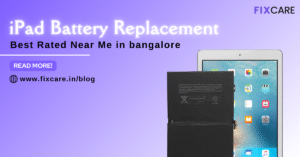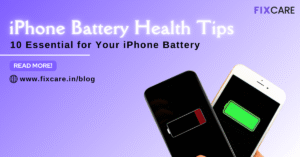
iPhone 17 Pro Max vs Galaxy S25 Ultra – Pros, Cons, and Verdict

Table of Contents
Every year, Apple and Samsung push the boundaries of smartphone technology, and 2025 is no different. With the launch of the iPhone 17 Pro Max vs Galaxy S25 Ultra, the two tech giants have once again set the stage for a showdown in the premium smartphone market.
If you’re wondering which flagship deserves your money, this in-depth comparison of iPhone 17 Pro Max vs Galaxy S25 Ultra will cover everything you need to know. From design and performance to cameras, battery life, and ecosystem advantages, we’ll break it all down—along with the pros, cons, and final verdict.
1. Design and Build Quality
iPhone 17 Pro Max
Apple continues its minimalist yet premium design philosophy with the iPhone 17 Pro Max. Crafted from aerospace-grade titanium and finished with a scratch-resistant ceramic shield, it feels solid and luxurious in hand. Apple has also slimmed down the bezels, making the screen feel even more immersive without increasing overall size.
The iPhone 17 Pro Max is also slightly lighter than its predecessor, thanks to refined materials, and it’s available in elegant shades like Midnight Black, Silver Frost, Titanium Gray, and a new Deep Blue finish.
Pros:
- Sleek titanium frame for durability.
- Ceramic shield glass offers excellent scratch resistance.
- Lightweight for its size.
Cons:
- Limited color options compared to Samsung.
- Design feels evolutionary, not revolutionary.
Galaxy S25 Ultra
Samsung’s Galaxy S25 Ultra embraces boldness. With sharper edges, a near bezel-less display, and Gorilla Armor 3 protection, it stands out. The built-in S Pen continues to be a unique selling point, making it ideal for productivity and creative tasks.
It comes in a wider range of colors—Phantom Black, Emerald Green, Titanium Silver, and Burgundy Red—catering to users who like variety.
Pros:
- Built-in S Pen with improved latency.
- Bold, futuristic design.
- Wider color palette.
Cons:
- Slightly heavier than the iPhone.
- The boxy edges may feel less comfortable in hand.
Verdict: Both phones boast premium builds, but the iPhone shines in lightweight elegance, while the Galaxy leads in functionality and variety.
2. Display Technology
iPhone 17 Pro Max
Apple equips its flagship with a 6.9-inch ProMotion OLED display with a 1Hz–120Hz adaptive refresh rate. The display reaches a peak brightness of 3000 nits, making it one of the brightest screens on the market, perfect for outdoor use. Colors are vibrant, and HDR support makes media consumption a delight.
Pros:
- Exceptional brightness for outdoor use.
- Ultra-smooth adaptive refresh rate.
- True-to-life color calibration.
Cons:
- No S Pen support for productivity.
- Slightly lower resolution compared to Samsung.
Galaxy S25 Ultra
Samsung’s displays have long been industry-leading, and the S25 Ultra is no exception. It features a 6.9-inch Dynamic AMOLED 3X display with a Quad HD+ resolution and a refresh rate up to 144Hz. The screen is tuned for vividness, with HDR10+ support and an impressive peak brightness of 3500 nits.
Pros:
- Higher refresh rate at 144Hz.
- Stunning Quad HD+ resolution.
- Excellent outdoor visibility.
Cons:
- Colors may appear oversaturated for some users.
- Higher refresh rate consumes more battery.
Verdict: Samsung wins in raw display specs, but Apple’s color accuracy and balance appeal more to professional creators.
3. Performance and Hardware
iPhone 17 Pro Max
Powered by the A19 Pro Bionic chip, built on Apple’s 2nm architecture, the iPhone 17 Pro Max delivers unmatched efficiency and speed. Its neural engine has been enhanced for AI-driven tasks, from photography to productivity apps.
Paired with 12GB of RAM and storage options up to 2TB, the device handles anything you throw at it, whether it’s 8K video editing or AAA mobile gaming.
Pros:
- Industry-leading A19 Pro chip.
- Extremely power-efficient 2nm process.
- Seamless integration with iOS 19.
Cons:
- RAM still lower than Samsung’s offering.
- No expandable storage.
Galaxy S25 Ultra
Samsung uses the Qualcomm Snapdragon 8 Gen 5 for Galaxy (in most regions), optimized for high performance and AI-driven multitasking. Paired with 16GB of RAM and storage options up to 1TB (with expandable microSD support), it’s a powerhouse for multitaskers.
Pros:
- Higher RAM capacity for multitasking.
- Expandable storage up to 2TB via microSD.
- Snapdragon 8 Gen 5 optimized for gaming.
Cons:
- Slightly behind Apple’s A19 Pro in benchmarks.
- Heavier power draw under load.
Verdict: The iPhone edges out in raw performance and efficiency, but the Galaxy provides more flexibility with RAM and storage.
4. Camera Systems
iPhone 17 Pro Max
Apple continues to focus on computational photography. The iPhone 17 Pro Max comes with a triple-lens setup:
- 48MP wide sensor
- 48MP ultra-wide sensor
- 48MP telephoto lens with 10x optical zoom
Apple’s new AI Smart Capture technology enhances low-light photography, cinematic video, and real-time editing. ProRes and ProRAW modes appeal to professionals.
Pros:
- Excellent low-light performance.
- ProRes and ProRAW for creators.
- Natural color tones in images.
Cons:
- Max zoom still capped at 10x optical.
- Lacks periscope zoom advantage.
Galaxy S25 Ultra
Samsung’s camera hardware is staggering. The S25 Ultra features a quad-camera setup:
- 200MP main sensor
- 48MP ultra-wide
- 50MP telephoto with 10x zoom
- 50MP periscope with 20x optical zoom
It excels in detail and zoom capabilities, offering up to 100x digital zoom. AI-powered processing enhances clarity and stability, especially in video.
Pros:
- Massive 200MP main sensor.
- 20x optical periscope zoom.
- Superior detail for zoom shots.
Cons:
- Photos sometimes look overprocessed.
- Large camera bump.
Verdict: Samsung dominates in zoom and resolution, while Apple takes the lead in natural, true-to-life imaging.
5. Battery Life and Charging
iPhone 17 Pro Max
With a 4,800mAh battery and the efficient A19 Pro chip, the iPhone easily lasts a full day of heavy use. Apple has introduced fast wired charging at 40W and MagSafe wireless charging at 25W.
Pros:
- Excellent optimization with iOS 19.
- Long-lasting battery life.
- Reliable MagSafe ecosystem.
Cons:
- Slower charging than Samsung.
- No reverse wireless charging.
Galaxy S25 Ultra
Samsung packs a 5,500mAh battery with 65W fast charging and 40W wireless charging. It also supports reverse wireless charging, letting you charge other devices like earbuds or smartwatches.
Pros:
- Larger battery capacity.
- Faster charging speeds.
- Reverse wireless charging.
Cons:
- Battery drains faster at higher refresh rates.
- Heavier device due to larger battery.
Verdict: Samsung takes the lead in charging speed and capacity, though Apple maintains efficiency.
6. Software and Ecosystem
iPhone 17 Pro Max
Running iOS 19, the iPhone 17 Pro Max integrates seamlessly with the Apple ecosystem—MacBooks, iPads, Apple Watch, and AirPods. Features like Universal Control, AirDrop Ultra, and Apple Intelligence AI make the ecosystem hard to beat.
Pros:
- Consistent updates for 7+ years.
- Flawless integration with Apple devices.
- Privacy and security focus.
Cons:
- Less customization compared to Android.
- Limited app flexibility.
Galaxy S25 Ultra
The Galaxy S25 Ultra ships with One UI 7 on top of Android 15, offering deep customization, multitasking tools, and S Pen integration. Samsung promises up to 7 years of software support, matching Apple’s commitment.
Pros:
- Highly customizable.
- S Pen functionality for productivity.
- Wider hardware compatibility.
Cons:
- Software bloat in some regions.
- Updates may roll out slower than Apple.
Verdict: Apple wins in ecosystem polish, while Samsung appeals to users who crave customization and flexibility.
7. Price and Value
- iPhone 17 Pro Max: Starting at $1,299 (128GB) and goes up to $2,099 (2TB).
- Galaxy S25 Ultra: Starting at $1,249 (256GB) and goes up to $1,799 (1TB, expandable).
While both are expensive, Samsung offers better storage value, but Apple justifies its pricing with performance and long-term support.
Pros and Cons Summary
iPhone 17 Pro Max
Pros:
- Best-in-class performance with A19 Pro chip.
- Exceptional software integration.
- Premium titanium design.
- Excellent low-light photography.
Cons:
- Slower charging speeds.
- Limited customization.
- No expandable storage.
Galaxy S25 Ultra
Pros:
- Incredible camera zoom and detail.
- Larger battery with faster charging.
- S Pen for productivity.
- Expandable storage.
Cons:
- Bulkier and heavier.
- Photos can be overprocessed.
Slightly behind Apple in chip performance.
Final Verdict – iPhone 17 Pro Max vs Galaxy S25 Ultra
Choosing between the iPhone 17 Pro Max vs Galaxy S25 Ultra depends on what you value most.
- If you prioritize performance, ecosystem integration, and long-term reliability, the iPhone 17 Pro Max is your best bet. It’s the ultimate tool for creators and professionals who rely on Apple’s ecosystem.
- If you want superior zoom photography, faster charging, and productivity with the S Pen, the Galaxy S25 Ultra stands out. It’s designed for power users who want maximum flexibility.
At the end of the day, both devices are incredible, and you can’t go wrong with either—your choice should come down to ecosystem preference and personal usage style.
- Tags: iphone 17 pro max
Recent Blogs


Best Rated iPad Battery Replacement Near Me in bangalore


The Only Laptop You Need? Our In-Depth MacBook Air M4 Review
Post 5
Post 4
Post 3
Post 2
Post 1
Post 5
Post 4
Post 3
Get your Device Repaired Today
Recent News


Best Rated iPad Battery Replacement Near Me in bangalore



